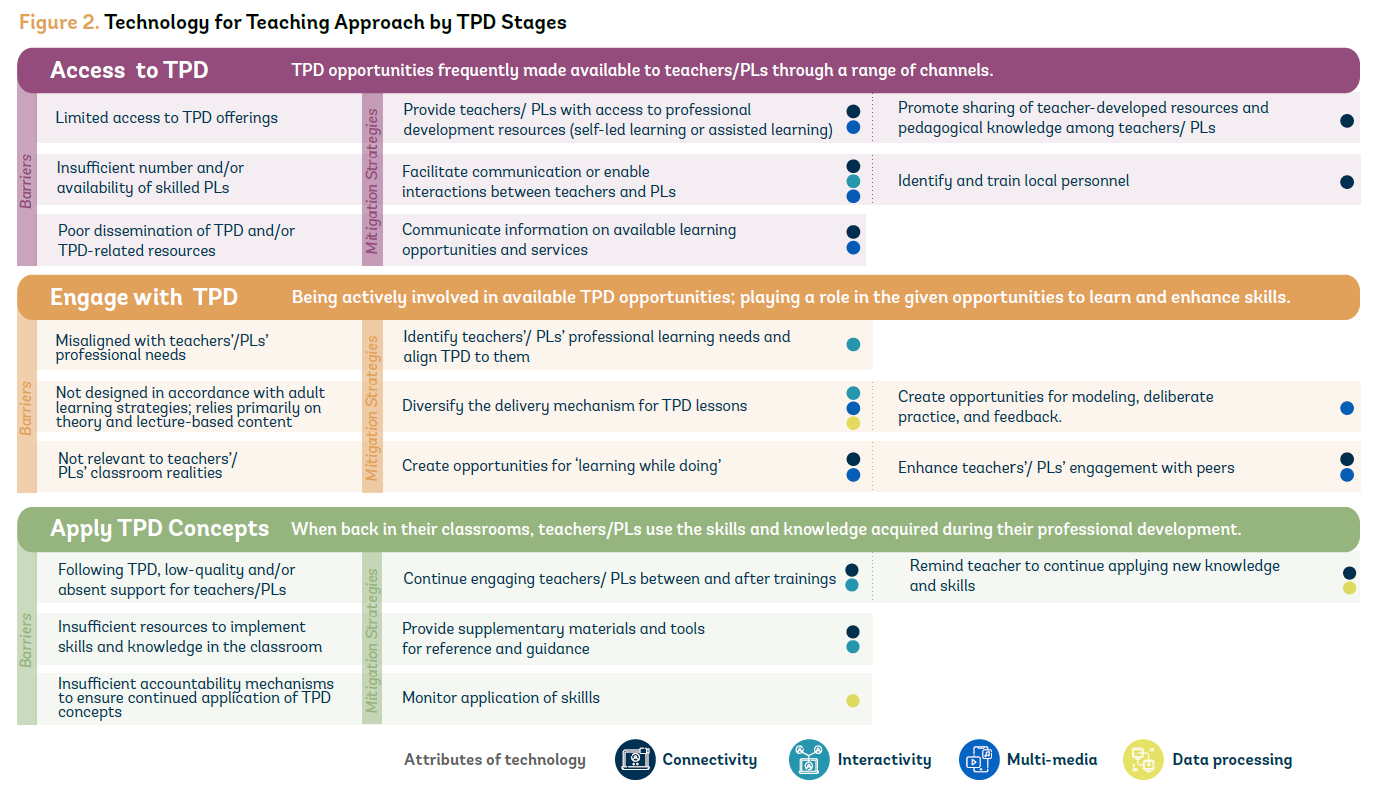 Technology can support teachers and students, but it needs to be used wisely and not as an isolated solution. Let me know if you have any questions, and thanks for your help! Copyright: Shutterstock
Technology can support teachers and students, but it needs to be used wisely and not as an isolated solution. Let me know if you have any questions, and thanks for your help! Copyright: Shutterstock
Teachers are crucial to improving learning and now, more than ever, they must be supported. The Successful Teachers, Successful Students report highlights the potential for using technology to support teachers and students, but emphasizes the need to use technology wisely and not as an isolated solution.
Technology has the potential to reach wider audiences in hard-to-reach places. But how do we achieve scalability without compromising on quality? Delivering high-quality in-service Teacher Professional Development (TPD) that improves teacher-student interactions is a challenge that education systems have struggled to address adequately, especially at scale. Decades of experience with traditional models of face-to-face training have not made the desired transformations in teaching practices to improve student learning. Moreover, the COVID-19 pandemic exacerbated this challenge, disrupting the normal operation of education systems by introducing a new reality of remote and/or blended learning for which millions of teachers were unprepared.
Technology can help support teachers remotely, but it won’t be enough on its own. A series of additional factors must be considered in the implementation of tech-based TPD programs—in particular, programs with at least some sort of in-person component tend to be more effective. With its unique attributes of connectivity, interactivity, multimedia, and data processing, technology can enhance the design and delivery of TPD, especially in low-resource or in contexts of fragility, conflict, and violence. Technology for Teaching (T4T) is the result of a World Bank effort focused on understanding the ways in which technology can be effectively leveraged to improve teaching practices. T4T provides practical tools to policymakers and practitioners to design and implement operationally feasible tech-based TPD in specific contexts.
If “low-tech and high-touch” can be impactful and transformative for TPD, where is the evidence?
T4T, in collaboration with RTI International, Education Endowment Foundation, and other development partners, published a review of global literature on tech-based TPD programs in low- and middle-income countries (LMICs). This review includes peer-reviewed studies and working papers that evaluate programs using technology to train and/or support K-12 teachers. This publication highlights six impactful methods of delivering tech-based TPD programs, including, communities of practice, modeling best practices, coaching, digital resources for learning, digital resources for teaching, and instructional tips and strategies (see table 1).
How is technology being used for TPD on the ground?
A global crowdsourcing initiative, called Teachers for a Changing World, conducted in collaboration with HundrED and UNESCO, among others, identified scalable and impactful TPD programs that utilize low- and high-tech solutions to train teachers and pedagogical leaders. After a rigorous review of over 400 TPD programs from 80 countries, the campaign selected the 10 most effective programs as the T4T champions. These 10 initiatives reflect how technology’s integration into a TPD program must be carefully considered and introduced with a clear purpose, adjusting to the context needs to enhance support to teachers in a way that traditional TPD practice cannot. To learn more, listen to the voices of these T4T Champions.
How can countries implement context-specific, impactful, and scalable tech-based TPD programs?
T4T identifies practical guidance that illustrates effective strategies for implementing tech-based TPD in varied contexts, especially those characterized by low to no connectivity. This work analyzes and compares scalable and impactful TPD tech-based solutions gathered from a review of global literature on tech-based TPD programs and a collection of case studies from implementors currently operating in LMICs). The operationally feasible, tech-based strategies featured in this guidance note have the potential to enhance access to and engagement with TPD, improve the application of skills and knowledge in the classroom, and can be implemented in low-resource contexts (see figure 2).
Click to see a larger version
Drawing on emerging research and successful on-the-ground programs that support teachers, it’s evident technology is not a “silver bullet” solution for all problems. Rather, it is a tool that policymakers can use under the right conditions to enhance support to teachers. Moreover, this work shows that it’s possible to support teachers at a scale, creating the right balance between technology and human connection. This balance is not a one-size-fits-all recipe but a combination of intervening components. The resources elaborated under T4T offer a wealth of information that could support or enrich the tools and capacities of teachers at different times of their professional development. The tech-based strategies featured in our guidance note have the potential to enhance access to and engagement with TPD, improve the application of skills and knowledge in the classroom, and can be implemented in low-resource contexts.
For a quick overview of the World Bank’s Technology for Teaching (T4T) program, check out this 1 minute video. If you are interested in learning more about this topic, this 3-video series shows how practitioners from different regions of the world are leveraging the affordances of technology to provide transformative TPD.
Innovative TPD facilitated through technology
Supporting teachers through blended TPD programs
Adapting TPD programs to low-resource contexts
You can also check out our Teachers webpage, T4T webpage, and email us with any questions, comments, or feedback.







Join the Conversation